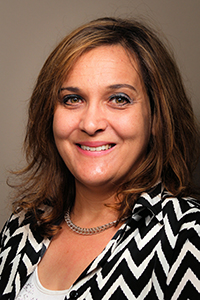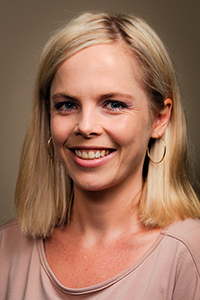People say they would speak up if they thought a child was being sexually abused; many are certain they would recognise exploitive activities and almost no one believes they would allow abusive behaviour to continue if they knew it was going on. Yet, statistics show that one in three South African children report some form of sexual abuse before their 17th birthday.
Guided by this disturbing statistic, two researchers and social work specialists from the School of Psychosocial Health at the North-West University’s (NWU) campus in Vanderbijlpark, Prof Ansie Fouché and Dr Elmien Truter, set out to establish how township communities can protect children from sexual abuse.
What makes their study significant is that they talked to child sex abuse survivors themselves to hear their views on the matter.
“Through this research we wanted to give a voice to vulnerable children and use their input to expand the existing knowledge base on this topic and pro-actively contribute to the development of precautionary initiatives,” says Prof Fouché.
The study was also an opportunity to empower social work students. As part of their practical work task, the students assisted by recruiting participants, between the ages of 13 and 18 years, to take part in the draw-and-write visual research project.
Township scenario
To better understand the unique township setting, the researchers used the following statistics by Statistics South Africa as a guide: a third of the South African population is younger than 18 years with an overall unemployment rate of 27%.
The unemployment rate is highest among black South Africans living in townships. Using the upper-bound poverty line (UBPL) of R992 per person per month, it is deduced that 46,6% of black African-headed households live below the UBPL.
Add to this the prevalence of substance abuse, the anecdotal complaints of a lack of social workers, medical and police services, as well as the high rate of crime, and the scene is set for maltreatment and abuse.
The power of pictures
The researchers and their team of student social workers implemented a visual research method. Each participate draw a picture about a specific topic, a technique that allowed them to reflect and organise their thoughts, memories and feelings.
Prof Fouché explains that this differs significantly from interviews or focus groups where responses are expected immediately. “It is important to note that to ensure that the drawings were interpreted correctly, we relied on the participants themselves to explain their drawings by means of a descriptive written paragraph,” she says.
Participants were asked the following question: “If you had a magic wand and could change things instantly, what would you change in the community where you are living in order to make sure that children won’t be sexually abused?” They were then asked to write a couple of sentences explaining what their drawing means.
Protect us from harm
According to Dr Truter, the research findings yielded several sub-themes all pointing to role-players and their roles and duties in creating a safe environment for children living in townships. The following role-players were identified:
• Community members
• South African Police Service (SAPS)
• Families
• Professionals (social workers, teachers and hospital staff)
• Children
“What we found very interesting is that very little emphasis was placed on the role of the child him/herself to prevent child sexual abuse,” says Dr Truter, adding that the role of community members and the SAPS were placed front and centre in terms of being the perceived custodians of safety.
Most powerful of all, perhaps, is how this research has given a voice to vulnerable children, whose message is clear: more must be done to protect them.
In step with WHO strategy
The researchers found that their study supports the World Health Organisation’s (WHO) strategy to reduce violence against children by 2030.
This is namely to ensure the implementation and enforcement of laws to prevent violent behaviour, strengthening of norms and values that support non-violent, respectful, nurturing, positive and gender equitable relationships for all children and adolescents, and creating safe streets and environments where children and youth can gather and spend time.
It furthermore includes delivering parental and caregiver support in communities in order to create positive parent-child relationships, economic strengthening of families, improving access to good quality health, social welfare and criminal justice support services for all children who need them, increase children’s access to more effective, gender-equitable education, and ensure that school environments are safe.
 |
 |
|
| Prof Ansie Fouché. | Dr Elmien Truter. |
